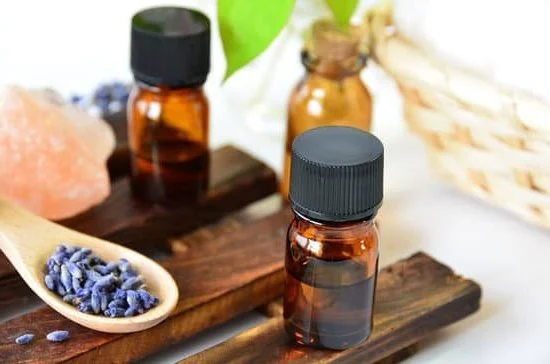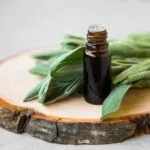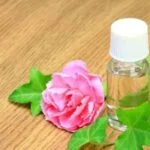How does an aromatherapy diffuser work? Aromatherapy is a holistic healing treatment that uses natural plant extracts to promote health and well-being. One of the most popular ways to enjoy the benefits of aromatherapy is through the use of an aromatherapy diffuser. These devices are designed to disperse essential oils into the air, allowing you to breathe in the therapeutic benefits.
Aromatherapy has been used for centuries as a natural remedy for various ailments, including stress relief, improved sleep, and enhanced mood. The practice of aromatherapy involves using essential oils extracted from plants to improve physical, mental, and emotional health. These essential oils can be inhaled, applied topically, or even ingested under the guidance of a qualified aromatherapist.
Aromatherapy diffusers come in various types, each with its own unique way of dispersing essential oils into the air. Understanding how these diffusers work and how they affect the quality and potency of essential oils is essential for harnessing their full therapeutic potential.
In this article, we will explore the science behind aromatherapy diffusers and how they disperse essential oils to provide you with all the information you need to make an informed decision about choosing the right diffuser for your needs.
Understanding the Different Types of Aromatherapy Diffusers
Aromatherapy diffusers come in a variety of types, each with its own unique way of dispersing essential oils into the air. The most common types of aromatherapy diffusers include ultrasonic diffusers, nebulizing diffusers, heat diffusers, and evaporative diffusers. Each type has its own advantages and disadvantages, so it is important to understand how each one works in order to choose the right one for your needs.
Ultrasonic diffusers work by using ultrasonic vibrations to break down essential oils into microscopic particles, which are then released into the air as a fine mist. This type of diffuser is popular because it also functions as a humidifier and does not use heat, which can alter the chemical composition of the oils.
On the other hand, nebulizing diffusers disperse essential oils into the air in their purest form without altering their molecular structure. They work by using pressurized air to create a fine mist of oil particles that are released into the air.
Heat diffusers, as the name suggests, use heat to evaporate the essential oils and disperse them into the surrounding air. These types of diffusers are simple to use and often less expensive, but they can alter the chemical composition of the oils due to the heat. Evaporative diffusers work by using a fan to blow air through a pad or filter that has been soaked in essential oils.
As the air passes through the pad, it picks up the oil particles and disperses them into the air. Understanding how each type of aromatherapy diffuser works can help you make an informed decision when choosing one for your aromatherapy needs.
The Science Behind Aromatherapy Diffusers
Aromatherapy diffusers are popular devices that are used to disperse essential oils into the air, providing a variety of therapeutic benefits. But how does an aromatherapy diffuser work? To understand this, it’s important to delve into the science behind these devices.
Principles of Diffusion
Aromatherapy diffusers work on the principle of diffusion, which is the process of dispersing molecules from an area of high concentration to an area of low concentration. When essential oils are added to a diffuser and dispersed into the air, they create a fine mist of aromatic molecules that can be easily inhaled and absorbed by the body.
Types of Diffusion
There are different types of diffusion methods used in aromatherapy diffusers, including ultrasonic, nebulizing, evaporative, and heat-based diffusion. Each method works in a unique way to disperse essential oils into the air, and understanding these differences can help you choose the right diffuser for your needs.
Benefits of Aromatherapy Diffusers
The science behind aromatherapy diffusers lies in their ability to effectively disperse essential oils into the air, allowing for easy inhalation and absorption by the body. This can lead to a range of benefits, including stress reduction, improved sleep, enhanced mood, respiratory support, and more. By harnessing the power of diffusion and understanding how aromatherapy diffusers work, individuals can experience the therapeutic effects of essential oils in their daily lives.
How Aromatherapy Diffusers Disperse Essential Oils
Aromatherapy diffusers work by dispersing essential oils into the air, allowing the user to enjoy the therapeutic benefits of the oils through inhalation. The process of dispersing essential oils is what makes aromatherapy diffusers such an effective and convenient way to experience aromatherapy.
Evaporation
One common method used by aromatherapy diffusers to disperse essential oils is through evaporation. This method involves using heat or airflow to cause the essential oils to evaporate, releasing their aroma into the air. Evaporative diffusers are often simple and easy to use, making them a popular choice for many people interested in aromatherapy.
Diffusion
Another method that aromatherapy diffusers use to disperse essential oils is diffusion, which involves breaking down the essential oil into tiny particles and dispersing them into the air. This can be achieved through ultrasonic vibrations or air pressure, resulting in a fine mist of essential oil particles being released into the surrounding environment.
Nebulization
Nebulizing diffusers work by using a stream of air to create a vacuum that pulls the essential oil up from the bottom of the reservoir and releases it in a fine mist. This method does not require any heat or water, which helps preserve the integrity of the essential oils.
Nebulizing diffusers are known for their ability to quickly disperse a high concentration of essential oil into the air, making them a popular choice for those looking for strong aromatic effects.
Overall, understanding how an aromatherapy diffuser works to disperse essential oils can help individuals choose the right type of diffuser for their needs and preferences. Whether it’s through evaporation, diffusion, or nebulization, each method offers its own unique benefits and features for enjoying the therapeutic properties of essential oils.
Exploring the Different Diffusion Methods
Aromatherapy diffusers work by dispersing essential oils into the air, allowing users to experience the therapeutic benefits through inhalation. There are several different diffusion methods that are used in aromatherapy, each with its own advantages and considerations.
One common method of diffusion is through the use of ultrasonic diffusers. These diffusers work by combining water and essential oils, then breaking the mixture into millions of microparticles that are released into the air as a fine mist. This method is popular because it does not require heat, which can alter the chemical composition of some essential oils. Ultrasonic diffusers also add moisture to the air, making them a great choice for dry climates or during the winter months.
Another popular diffusion method is nebulizing diffusers, which do not require water at all. Instead, these diffusers use an atomizer to break down pure essential oils into tiny particles that are released into the air. Since no heat or water is involved, nebulizing diffusers provide a more concentrated aroma and therapeutic benefits, making them ideal for those who are looking for a more potent aromatherapy experience.
A third method of diffusion involves using heat to disperse essential oils into the air. Heat-based aromatherapy diffusers may use a small flame or electricity to warm up a tray or pad that holds the essential oils, causing them to evaporate and release their aroma.
While heat diffusion can be effective and affordable, it does have some drawbacks: it can alter the chemical composition of certain essential oils and may not provide as consistent an aroma as other methods. In addition to these three primary methods of diffusion, there are also passive diffusion methods such as using reeds or clay pendants to release scents gradually over time.
| Diffusion Method | Advantages | Considerations |
|---|---|---|
| Ultrasonic Diffusers | Adds moisture to the air; Does not alter oil composition | May be less potent than other methods |
| Nebulizing Diffusers | Makes for more potent aromatherapy experience; No water needed | Slightly more expensive; Can be noisy in operation |
| Heat-based Diffusers | Affordable; Can effectively diffuse oils. | Can alter oil composition; Less consistent aroma; |
Tips for Choosing the Right Aromatherapy Diffuser for Your Needs
When it comes to choosing the right aromatherapy diffuser for your needs, there are several factors to consider. Here are some tips to help you make the best decision:
1. Consider the size of the area: If you have a small space, such as a bedroom or office, a personal diffuser or a smaller ultrasonic diffuser may be sufficient. For larger spaces, like living rooms or open-concept areas, you may want to consider a nebulizing diffuser for more powerful and effective dispersion of essential oils.
2. Think about your preferred diffusion method: Different types of aromatherapy diffusers offer different diffusion methods. For example, ultrasonic diffusers use water to disperse essential oils in a fine mist, while nebulizing diffusers break down pure essential oils into particles without using water. Determine which method aligns with your preferences and needs.
3. Evaluate ease of maintenance: Some aromatherapy diffusers require regular cleaning and maintenance, while others are low-maintenance. Consider how much time and effort you are willing to invest in maintaining your diffuser. Ultrasonic diffusers typically require regular cleaning and water changes, while nebulizing diffusers are easier to maintain but may require occasional maintenance.
By considering these factors, you can make an informed decision when choosing an aromatherapy diffuser that fits your specific needs and preferences.
As we can see from these tips for choosing the right aromatherapy diffuser for your needs, understanding how does an aromatherapy diffuser work is essential in making the best choice for utilizing this beneficial practice in daily life.
Whether it’s considering the size of the area where you plan to use the diffuser or evaluating how much maintenance you’re willing to commit to your device – all these decisions ultimately depend on understanding how aromatherapy diffusion works so that you can fully harness its benefits for health and well-being.
Remember that investing time in research about different types of diffusion methods will ultimately lead you to choose an option that perfectly suits your lifestyle while enhancing your overall well-being through the power of essential oils and aromatherapy diffusion.
Maintenance and Care for Aromatherapy Diffusers
Aromatherapy diffusers are a wonderful way to enjoy the benefits of essential oils in your home or workspace, but proper maintenance and care are essential to keep them functioning effectively. Here are some tips for maintaining and caring for your aromatherapy diffuser:
1. Regular Cleaning: It’s important to clean your aromatherapy diffuser regularly to prevent the buildup of essential oil residue and mold. Use a soft, damp cloth to wipe down the inside of the water tank and the outside of the diffuser. For a deeper clean, you can also use a small amount of white vinegar to remove stubborn residue.
2. Use Distilled Water: To ensure that your aromatherapy diffuser continues to work efficiently, it’s best to use distilled water instead of tap water. This can help prevent mineral buildup inside the diffuser and prolong its lifespan.
3. Follow Manufacturer Instructions: Different types of aromatherapy diffusers may have specific care instructions provided by the manufacturer. Be sure to read and follow these instructions carefully to keep your diffuser in optimal condition.
4. Replace Parts as Needed: Over time, certain parts of your aromatherapy diffuser may need to be replaced, such as the atomizer or filter. Keep an eye on the performance of your diffuser and replace any necessary parts according to the manufacturer’s recommendations.
By following these maintenance and care tips, you can ensure that your aromatherapy diffuser continues to work effectively, allowing you to enjoy the benefits of essential oils for years to come.
Exploring the Benefits of Aromatherapy and Diffuser Blends
Aromatherapy has been used for centuries as a natural way to enhance physical, mental, and emotional well-being. By using aromatic essential oils extracted from plants, aromatherapy can promote relaxation, relieve stress, improve sleep quality, and even boost mood.
One of the most popular ways to enjoy the benefits of aromatherapy is through the use of an aromatherapy diffuser. These devices are designed to disperse essential oils into the air, allowing their therapeutic properties to be inhaled and absorbed by the body.
When it comes to exploring the benefits of aromatherapy and diffuser blends, it’s important to understand how an aromatherapy diffuser works. Aromatherapy diffusers operate by breaking down essential oils into tiny particles and dispersing them into the air. This process allows the aroma of the essential oils to fill the room, creating a pleasant and therapeutic environment. Different types of diffusers employ various methods for dispersing these particles, such as ultrasonic vibration, heat, or airflow.
In addition to enjoying the therapeutic benefits of individual essential oils, many people also create their own diffuser blends by mixing different oils together. These blends can be tailored to address specific needs or preferences, such as promoting relaxation, improving focus and concentration, or enhancing respiratory health. With the right combination of essential oils and a quality diffuser, individuals can harness the power of aromatherapy to support their overall health and well-being.
Conclusion
In conclusion, aromatherapy diffusers offer a versatile and effective way to enjoy the benefits of essential oils for health and well-being. Understanding how an aromatherapy diffuser works can help users make informed choices when selecting the right diffuser for their needs. Whether it’s through ultrasonic, nebulizing, or heat-based diffusion methods, these devices disperse essential oils into the air, allowing for inhalation and absorption through the skin.
The versatility of aromatherapy diffusers allows users to customize their experience according to their preferences and needs. From promoting relaxation and reducing stress to improving sleep quality and boosting mood, the benefits of essential oils are vast. By selecting the right diffuser and blend of essential oils, individuals can harness the power of aromatherapy to support their overall health and well-being.
As with any device, proper maintenance and care are important to ensure optimal performance and longevity of an aromatherapy diffuser. Regular cleaning and following manufacturer’s instructions can help prevent issues and maintain a safe and effective diffusion of essential oils.
With the knowledge of different types of aromatherapy diffusers, their science behind operation, ways they disperse essential oils, tips for choosing them based on personal needs – one can harness the full potential of these devices for improved health and well-being.

Are you looking for a natural way to improve your health and wellbeing?
If so, aromatherapy may be the answer for you.





